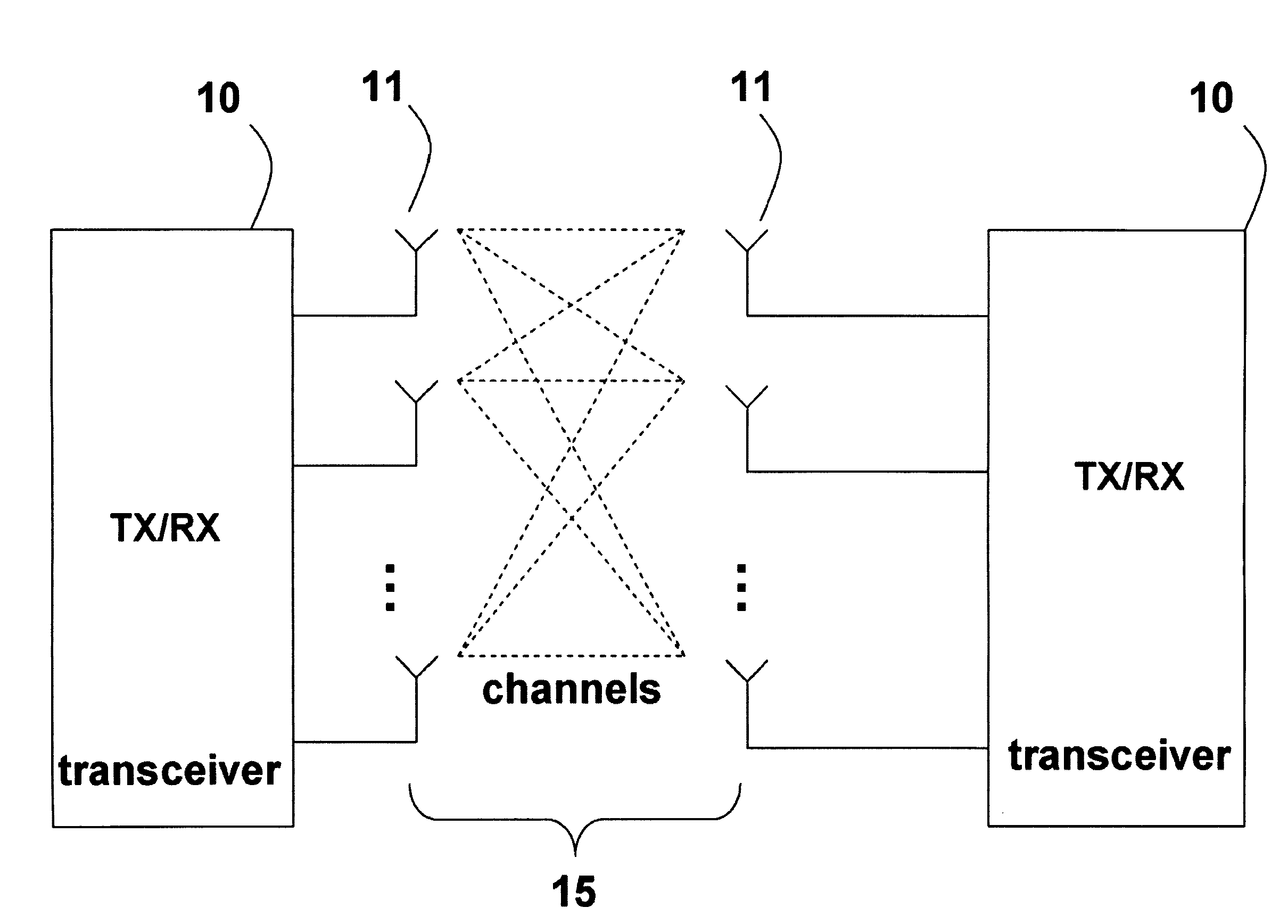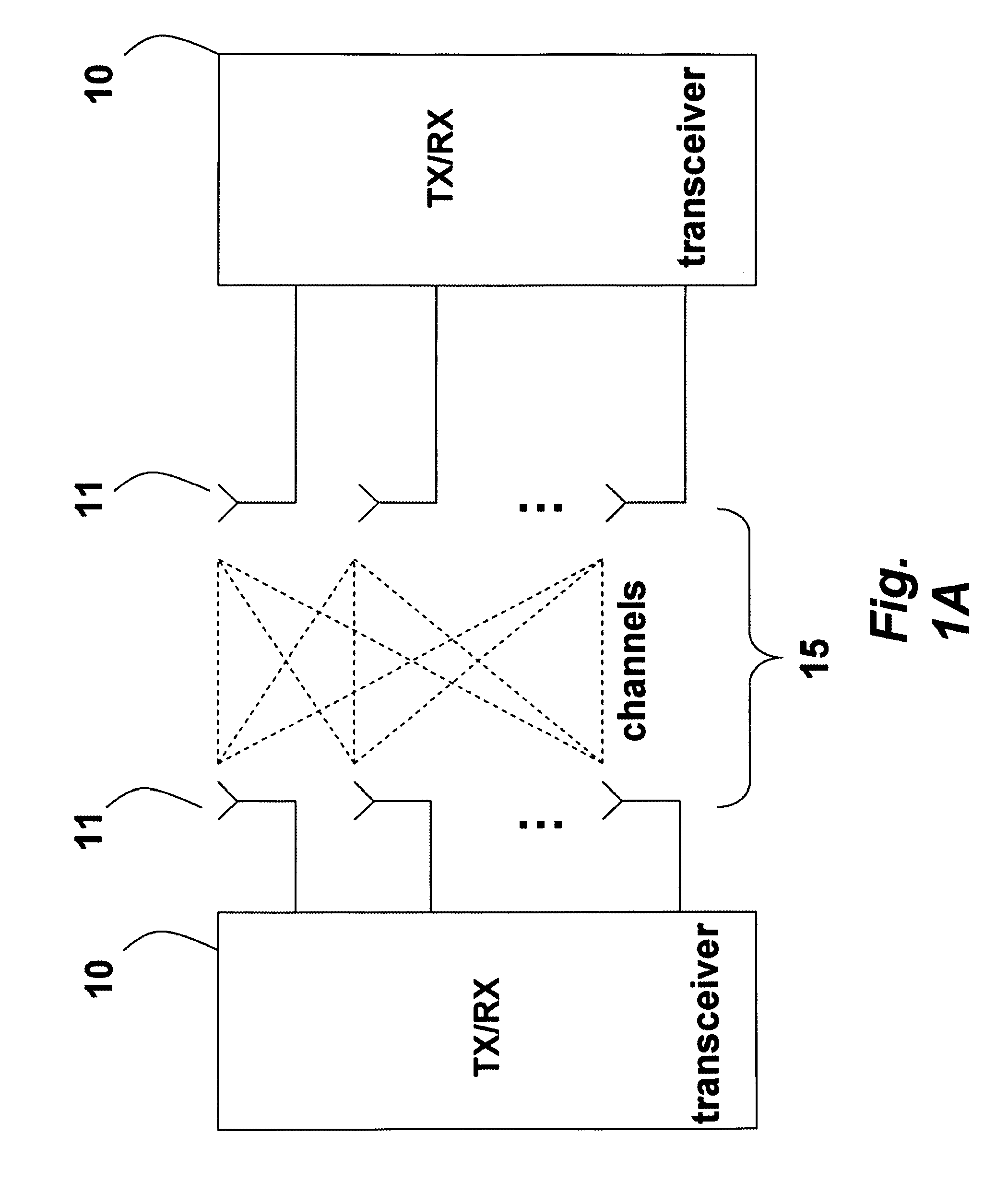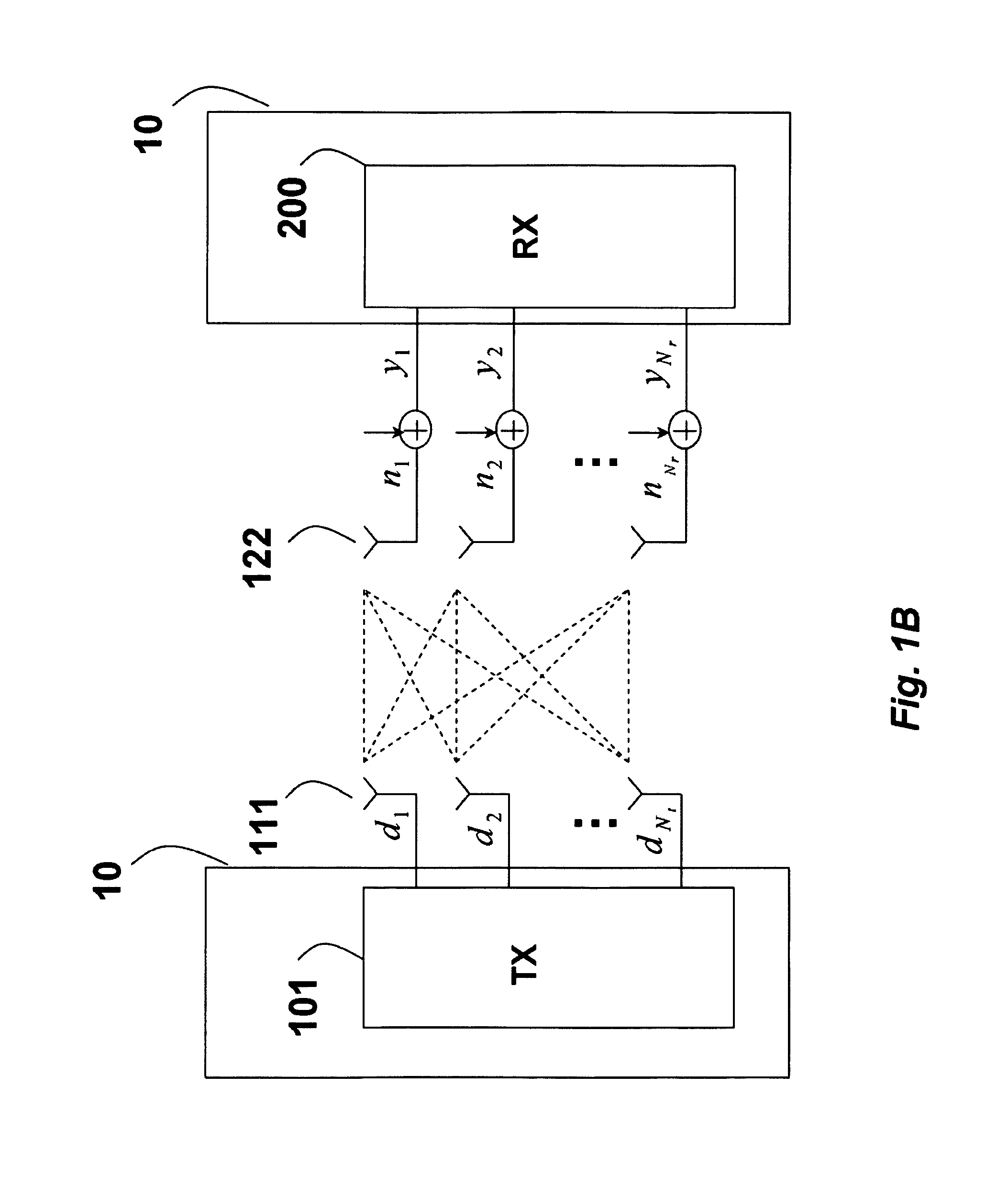System and method for generating soft output in hybrid MIMO systems
a hybrid mimo and output technology, applied in multi-frequency code systems, polarisation/directional diversity, amplitude demodulation, etc., can solve the problems of increasing the complexity of the receiver, difficult to implement a map detector in practical systems, and increasing noise energy
- Summary
- Abstract
- Description
- Claims
- Application Information
AI Technical Summary
Benefits of technology
Problems solved by technology
Method used
Image
Examples
Embodiment Construction
[0019]MIMIO System
[0020]The embodiments of the invention provide a method and system for MIMO detection with low complexity and latency for a wide range of SNR conditions. The invention provides a hybrid soft output MIMO detector that combines QR decomposition (QRD-M) detection followed by Markov chain Monte Carlo (MCMC) detection to generate soft output, which is near optimal for widely varying SNR conditions.
[0021]FIG. 1A shows a spatial multiplexing MIMO system used by the embodiments of the invention. The system includes multiple transceivers 10. Each transceiver includes a set of antennas 11. Each transceiver can operate in either transmit (TX) or receive (RX) mode. In TX mode, the antennas are connected to transmit RF chains, and in RX mode the same antennas can be connected to receive RF chains. Signals 12 are transmitted via channels 15 subject to noise.
[0022]FIG. 1B shows a first transceiver 10 operating in transmit mode by having a transmitter (TX) 101 connected to a set o...
PUM
 Login to View More
Login to View More Abstract
Description
Claims
Application Information
 Login to View More
Login to View More - R&D
- Intellectual Property
- Life Sciences
- Materials
- Tech Scout
- Unparalleled Data Quality
- Higher Quality Content
- 60% Fewer Hallucinations
Browse by: Latest US Patents, China's latest patents, Technical Efficacy Thesaurus, Application Domain, Technology Topic, Popular Technical Reports.
© 2025 PatSnap. All rights reserved.Legal|Privacy policy|Modern Slavery Act Transparency Statement|Sitemap|About US| Contact US: help@patsnap.com



